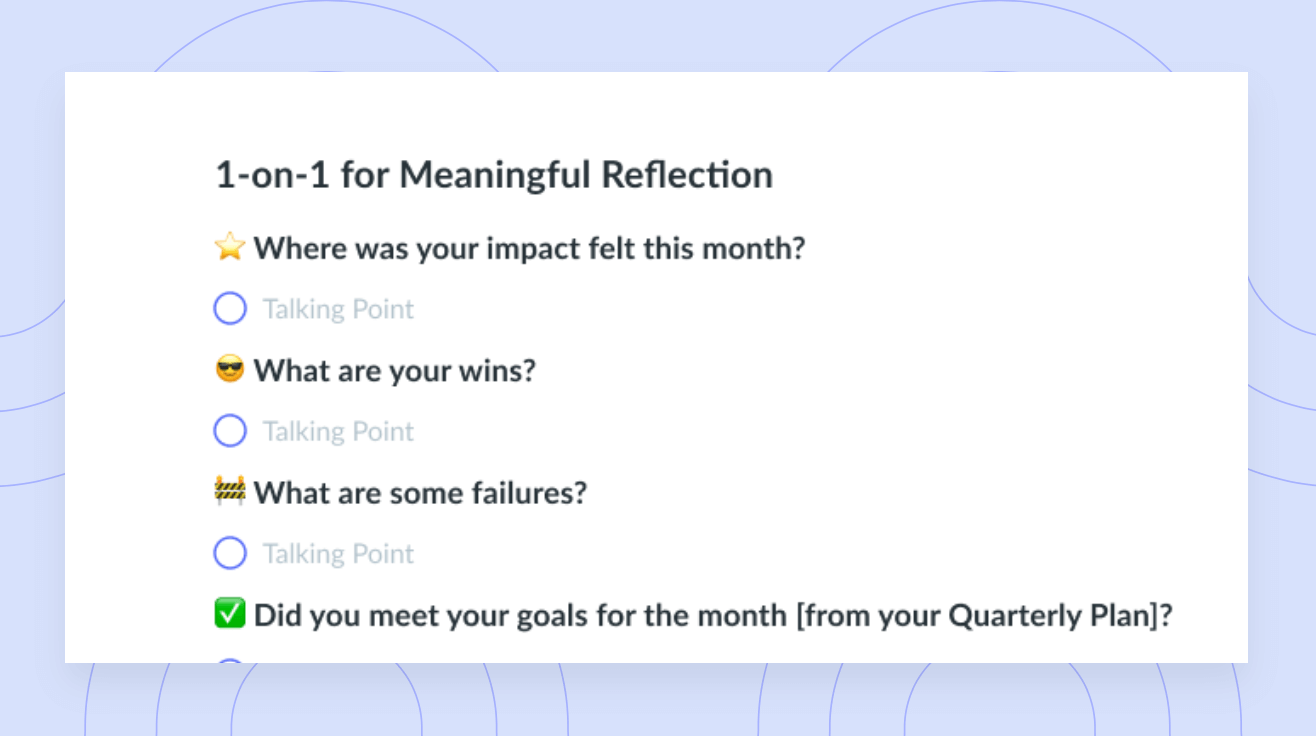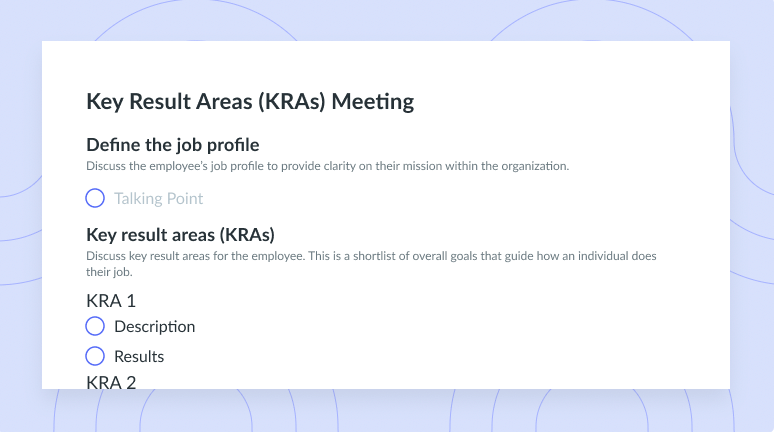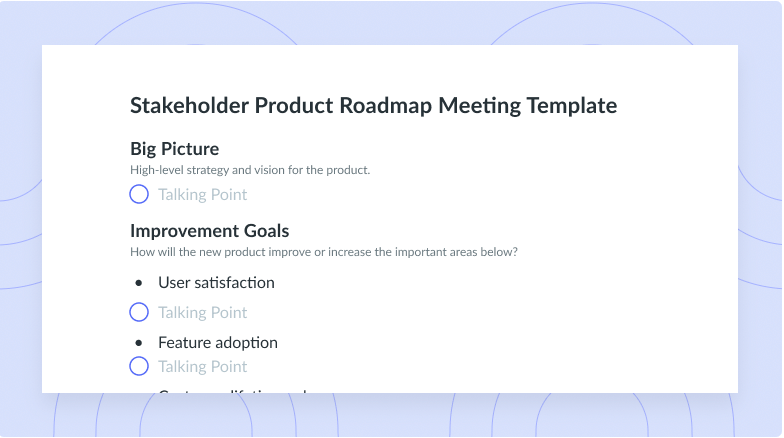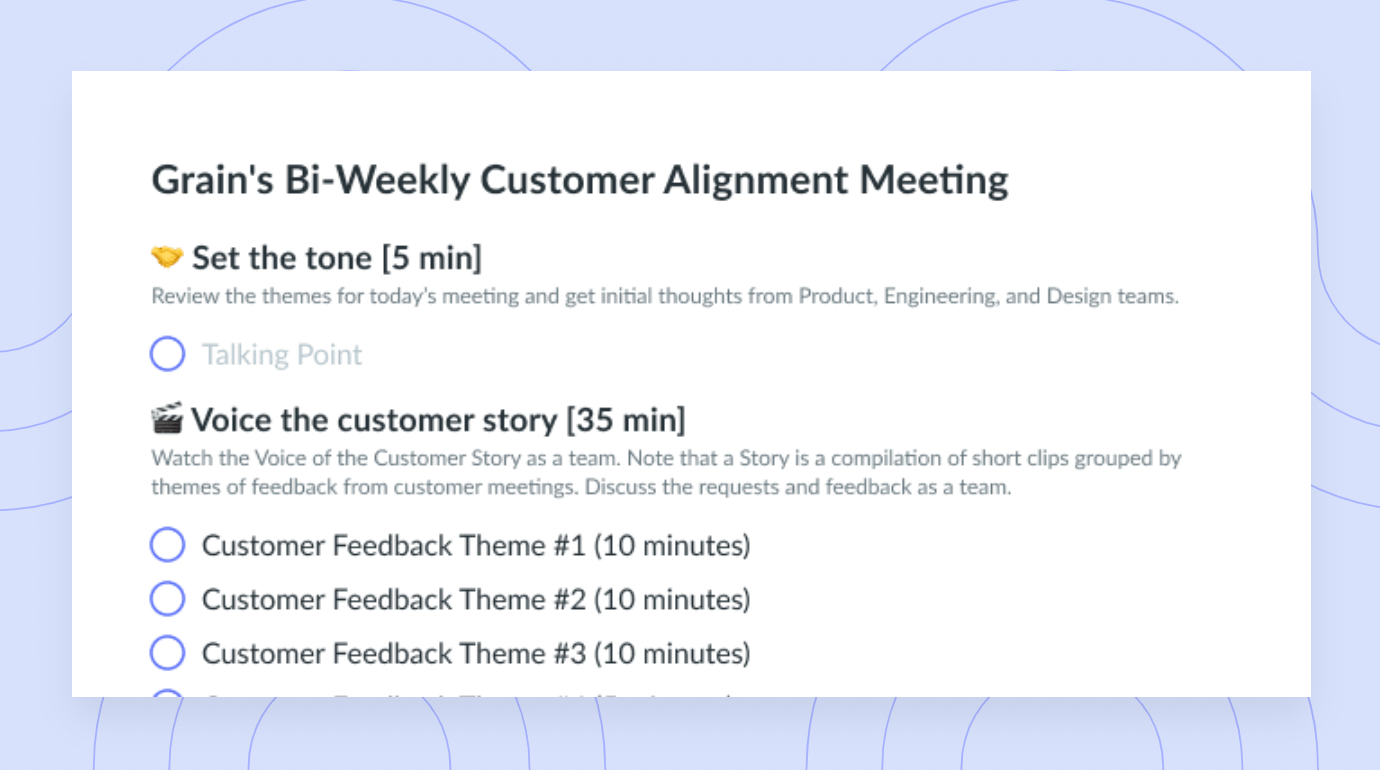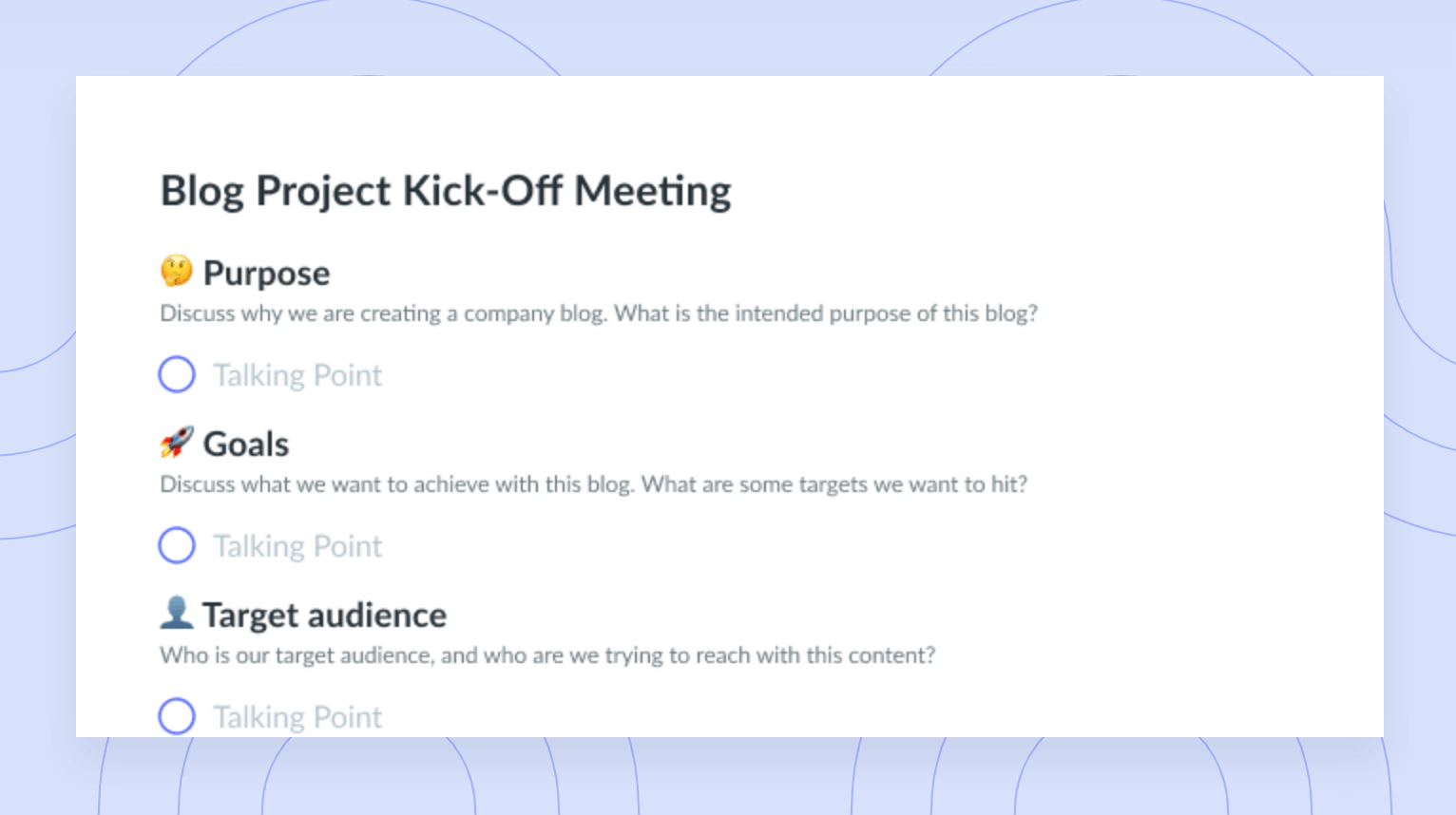How To Build A Roadmap: A Guide of Examples and Tips
Learn these best practices for roadmap building so you can achieve even the most ambitious goals.
A crucial step in launching a new product or service is determining its ideal impact on your chosen market. Setting a clear end goal for whatever you’re launching gives your team a unified objective toward which to work. The next step is to create a high-level strategy that outlines, in broad strokes, the measures needed to make your product a reality. You’ll need to do so while minimizing miscommunications that cause delays. That’s why you should know how to build a roadmap.
Creating a product roadmap can help you avoid mishaps in the planning stage. Your map will also work as a guidepost for every phase of development up until the release date. To create an effective map, you’ll need a clear focus on the future and an uncanny ability to master task management. Keep reading for several helpful tips on how to build a roadmap for your next launch.
- What is a roadmap?
- What types of roadmaps are there?
- Why is roadmapping important?
- What should be included in a roadmap?
- 9 tips on how to build a roadmap
- Mistakes to avoid when building a roadmap
What is a roadmap?
A roadmap serves as an overview of how your product will impact the market, along with the milestones needed to get there. It serves an essential role in product strategy because it allows for more precise estimates on when you’ll achieve certain objectives. It also gives your team something to reference so they’ll know when to shift priorities toward a new goal. It’s basically a Gantt chart that’s also capable of holding your team members’ hands from start to finish.

One source of truth
Always stay on track of progress and have a source of truth for decisions made and action items with a tool like Fellow!
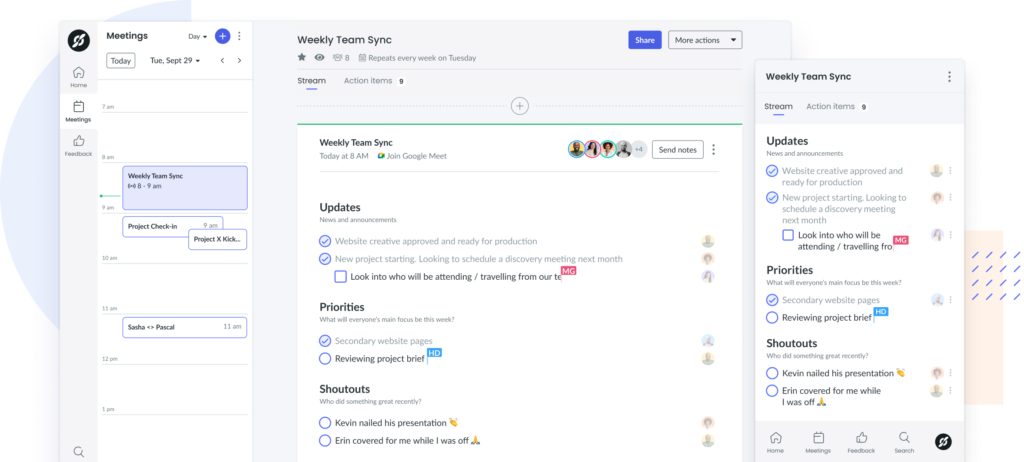
What types of roadmaps are there?
There isn’t one universal strategy for reaching the market. (If there were, you’d probably look just like your competition!) Each project requires a unique development plan to ensure it receives relevant input from all involved teams. That’s why there are several types of roadmaps that reflect the diversity in strategic planning. Picking the roadmap that best meets your project’s needs is essential in creating a successful product. Some of the most common roadmaps include:
- Marketing strategy. A marketing strategy roadmap outlines the markets in which you’ll launch and promote your product. It will also show how you’ll develop your product over time to meet your customers’ needs. Hint: Actually listening to your customers as they use your product can be super helpful here!
- Visionary. A visionary roadmap visually represents the changes happening within your industry and society at large. It indicates trends in these areas and describes how the company’s product will fit into the big picture and remain relevant despite shifting interests.
- Technology. Technology roadmaps help companies plan future initiatives regarding their technical infrastructure. These initiatives can be narrower in scope, like when the IT team needs to roll out updates for their software. But these roadmaps also allow you to plan broader technological objectives and get a fair amount of use when creating entirely new tech.
- Platform. Platform roadmaps outline the technical specifications needed for your product or service to run successfully. For example, Windows operating software needs hardware to run on, or else no one has any use for the product.
- Product (internal and external). Internal and external product maps sketch out the evolution of the product. Internal roadmaps detail development priorities among your teams, helping to get everyone on the same page. External roadmaps communicate the benefits of your product to customers, press, and analysts without getting too technical or specific
Why is roadmapping important?
Building a roadmap is key to your strategic planning, as it solidifies how your team will transform your product ideas into actual things. A well-built roadmap can also help your team stay focused. Its ideal final result can prove pretty motivating when you’re deep in high-intensity tasks.
Everyone from development to marketing and even upper management will see the roadmap, which is subject to change as the product requirements evolve. Your map might help your team understand why you’ve made certain decisions along the way.
Above all, the key takeaway here is that roadmaps show your vision and how to get there. They can drive employee engagement through meaningful shared goals. Plus, they can convince skeptical or potential stakeholders that funding your company is a worthwhile investment. Just follow your map to make good on that promise.
What should be included in a roadmap?
The most critical components in a high-quality product roadmap include:
- Vision. Your roadmap should address how your product will ideally affect your target market and improve the end user’s day-to-day life. It’s the why to the how.
- Strategy. Your strategy comprises the steps that serve as your primary development guideposts. It gives your team goals to reach, spells out what you’ll need for a successful launch, and hints at the product’s potential financial benefits.
- Requirements. Your requirements transform customer desires, needs, and feedback into what’s necessary for a successful product. Your marketing and sales teams can help you determine these requirements. You can also speak directly with customers! Online communities and email surveys are two simple ways to reach out.
- An overarching plan. These are the x your team should reach to make your vision a reality. The order you present them in is just as important as their actual content. After all, how can you reach a goal if you start walking in the wrong direction?
- Metrics. A roadmap should also include relevant, real-world data available now alongside ideal long-term metric goals. These numbers can help you determine the product’s success (or lack thereof) and what features need to be updated or removed.
9 tips on how to build a roadmap
Whether you’re new to product management or a seasoned vet, making the most precise product roadmap possible can come with some challenges. But these obstacles are far from insurmountable! If anything, with your team at hand, you can overcome your challenges and create a roadmap that starts improving your processes right here and now. Start with the below nine tips on how to build a roadmap.
- Choose the type of roadmap
- Share your “why”
- Tailor your roadmap to your audience
- Prioritize the right themes
- Stay flexible
- Use the right roadmapping tool
- Make the roadmap clear and compelling
- Assign broad timeframes for milestones
- Gather and utilize feedback
1 Choose the type of roadmap that best serves your needs
As mentioned previously, several different types of roadmaps exist. Each one displays different information – for example, marketing strategy roadmaps focus on the market impact of the product. On the other hand, a visionary roadmap helps you shape your business strategy on how a product might fit the big picture. Your choice of roadmap should reflect your target audience rather than your products or services.
2 Share your “why”
Ask yourself: Why are you building this product, for this market, at this time? It’s a question that drives a large part of the product development process, and you should discuss it with your team before putting anything in writing. Articulating your product’s impact on a particular market – with thorough research behind your statements – can help stakeholders see why your company is a worthwhile investment. It can also help you make a more powerful impact on customers when you go to market.
3 Tailor your roadmap to your audience
A roadmap is shared with internal teams and the general public. Don’t conflate having multiple audiences, though, for needing solely one roadmap. Developers, stakeholders, and the public have different expectations for how a product will perform upon release. A one-size-fits-all approach offers only the bare minimum of information to all parties involved.
For best results, create a development roadmap that focuses on how building the product will affect your team’s day-to-day responsibilities. Then, make a roadmap that demonstrates trends in the market and how they portend financial success. Finally, create a simplified roadmap for your consumer base that shows how your product will benefit their lives as the product evolves.
4 Prioritize the right themes
There are many aspects to consider when developing a product strategy. For example, as you build a product roadmap, including every little thing can make for a cluttered document that does more harm than good. Try using themes to better organize information within a product roadmap and improve your decision-making during the creation process.
Themes are the main strategic objectives you hope to achieve with your product or service. After determining your themes, you can further break them down into “epics” (yes, epics) that detail the work needed to accomplish a goal.
5 Stay flexible
Roadmaps can change over time based on several factors. Your access to resources can fluctuate, a competitor can release a similar product – the list goes on. That’s why, when you build a product roadmap, you should leave room to accommodate sudden changes. This way, you can be proactive, not reactive – and nobody likes having to deal with a problem they could’ve solved ages ago.
6 Use the right roadmapping tool
Several roadmapping software programs expedite the creation of high-quality roadmaps. The features of this specialized software include:
- Enhanced visualization. Using a roadmapping tool gives you greater control over your map’s visual style and organization. Most roadmap programs come with various fonts, colors, and graphic templates to help you make something visually appealing that keeps the information clear.
- Extensive detailing. Roadmapping programs can typically cater to multiple levels of detail so you can include or exclude certain information depending on the audience. You can tweak your roadmap in real-time to provide relevant data to your team, your stakeholders, and other strategic partners.
- Increased shareability. Roadmapping tools make sharing information with relevant parties more manageable. Simply share the roadmap like you would any other file and voila – everyone who needs it should have it!
7 Make the roadmap clear and compelling
A roadmap’s primary purpose is to provide information on the company’s product strategy and the stages necessary to stay on track. Sounds kind of dry and uninteresting, right? Well, it doesn’t have to be – and your strategic partners and stakeholders certainly engage more when things are clear and compelling. Making your roadmap stand out as such involves prioritizing the use of interesting visuals and riveting copy. One idea on the latter front: Pretend you’re writing this blog instead of a rigid internal document.
8 Assign broad timeframes for milestones
Committing your team to hard deadlines might not leave much room for adjustments or unexpected innovations. As a result, your service or product might reach its release date with serious bugs or errors that you could have avoided with proper testing. Instead, set broader timeframes or omit deadlines altogether. (Or at least save deadlines for your project management software, not your roadmap.) This way, your team can work at an optimal pace and increase their chances of releasing a great product.
9 Gather and utilize feedback
Your job isn’t done after a product’s release date. Your product or service can continue to evolve after its initial release based on feedback from your consumer base. After all, a roadmap is fundamentally liable to change as your product goals shift, and public opinion might be your single greatest selling factor. So engage with your customer support and sales teams – or directly with your customers – to identify what to bring back to the drawing board.
Mistakes to avoid when building a roadmap
The paramount importance of roadmaps means that any mistakes or poor wording can easily halt forward momentum. Don’t be that person – avoid this trap by getting to know the below common oversights with product roadmaps.
- Not making your plan front and center
- Failing to include evidence that supports your plan
- Including dates too far out on your roadmap
- Not accounting for items left out of the roadmap
1 Not making your plan front and center
The basis for the themes included in your roadmap may seem obvious when you’re writing them. But the human mind is fickle – knowing your themes well now doesn’t mean you’ll remember them in the long term. And that’s a shame: You and your team will constantly refer back to the roadmap throughout the development process. So state the reasoning behind your strategic goals now. That way, your roadmap remains an efficient tool for driving more efficient development.
2 Failing to include evidence that supports your plan
Having goals and the reasoning behind them on the roadmap is an excellent first step, but you’ll need to support your conclusion. After all, one of the primary reasons to make a roadmap is to build faith in what you’re making. Sure, stakeholders might see the motives behind your goals, but motives are different from evidence of potential success. The former means much less without the latter.
3 Including dates too far out on your roadmap
Never assume your team will follow your roadmap to the letter. Roadmaps are too flexible and broad for that! Priorities and resources can shift many times during the typical development cycle, and setting firm dates doesn’t support your team’s ability to adjust. So if you do include dates within your roadmap, make sure they’re broad enough to accommodate unforeseen changes. A Q4 target allows much more flexibility than an exact date.
4 Not accounting for items left out of the roadmap
A good roadmap is clear and appealing enough to keep one’s attention. Losing focus, though, can be inevitable in a document too jam-packed with information. Some product features or services will inevitably need to be excluded to keep things clear.
At the same time, ignoring these items altogether is less than ideal because someone might question why you excluded a particular item. That’s why you should proactively explain why certain things didn’t make the cut. It won’t make everyone happy, but it does show that each topic was given fair consideration. Overall, it’ll make for better meetings.
The roadmap to success
Knowing how to build a high-quality roadmap can make several disparate teams work like a well-oiled machine as they move toward the same goal. You’ll find that, when stakeholders support your efforts and your team has clear guidance, the quality of the final product improves. That’s even more true when you throw strategic meetings into the mix, especially with Fellow at hand. With Fellow’s meeting agenda, execution, and follow-up tools, all your ideas will become steps on your roadmap before you know it.




![Product Management OKRs 101 [+ Examples]](https://fellow.app/wp-content/uploads/2022/05/Product-Management-OKR.jpg)

![The 5/25 Rule: How to Apply It [+ Example]](https://fellow.app/wp-content/uploads/2023/05/The-525-Rule2.jpg)



